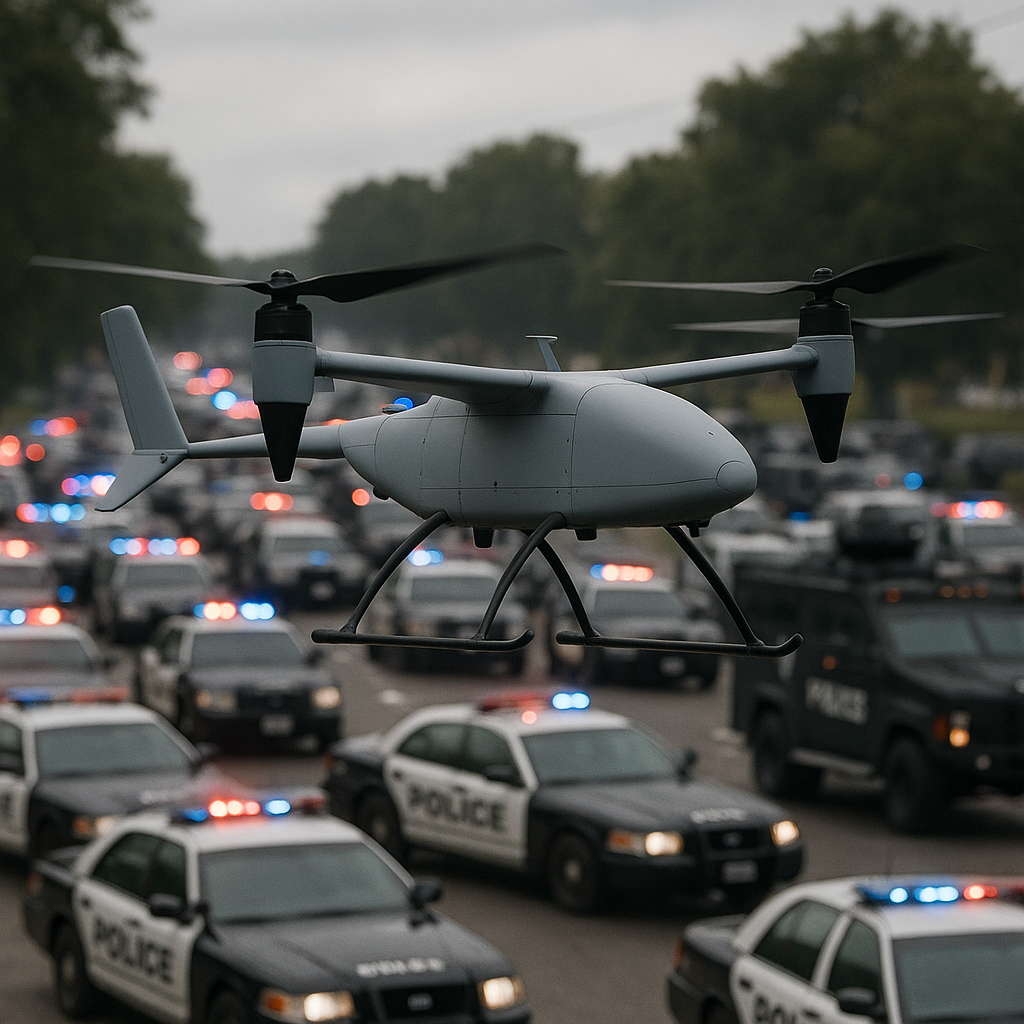PS-500 Delta | Utilizing drones for aiding Law Enforcement in car pursuits

A few months ago, I promised to release a drone prototype by the end of 2025, designed to assist law enforcement in car pursuits. The project was called "PS-500 Delta", where "PS" stood for "Pursuit," "500" referred to the payload capacity in milliliters, and "Delta" was the designated call sign. However, that plan has now been cancelled, and I’m writing this blog to explain why.
You can find the post here:
https://www.linkedin.com/posts/kohihamed_home-activity-7280247620067807232-60se
The evolution of the drone project
When I make a promise, I deliver or at least I hold myself accountable with a transparent explanation. The drone project I proposed months ago, though initially promising, has been reevaluated, and I’ve made the difficult decision to halt its development. This wasn’t a choice made lightly; it’s the result of critical feedback and deep reflection.
The concept was born from a desire to address the chaos of high-speed car chases in the United States & Canada, where police deploy helicopters, multiple patrol cars, and significant resources, creating dangerous conditions for suspects, officers, emergency services (ambulances & fire trucks) and bystanders alike. My idea was to develop a drone-based system to safely stop fleeing vehicles by temporarily obscuring their windshields, forcing drivers to slow down without violence. Initially I wanted to create a conceptual quadcopter drone for demonstration and then upgrade it to a small-size VTOL drone to match the speed of car pursuits.
Below, I outline the proposed solutions, their challenges, and why I’ve chosen to step back.
The original idea: Disrupting high-speed pursuits
High-speed chases are resource-intensive and hazardous. My goal was to design a drone that could deploy a non-lethal payload to obscure a fleeing vehicle’s windshield, compelling the driver to stop safely. I explored two primary methods:
- a high-powered water gun with epoxy paint
- a specialized paintball gun
Both, however, presented significant obstacles.
Water gun attached to a drone
The concept was to use a drone-mounted, high-pressure water gun to spray epoxy paint onto a fleeing vehicle’s windshield, blocking the driver’s view. While creative, this approach had critical flaws:
- Environmental limitations: Epoxy paint could freeze in cold weather, rendering the system unreliable in winter conditions
- Range and accuracy: The mechanism’s effective range is limited to a few dozen feet, with poor accuracy over longer distances, making it impractical for dynamic pursuits
- Collateral damage: Paint splatter could dirty roads, creating hazards for other drivers. Misfires could also cause unintended accidents
- Workarounds: Drivers could lean out of windows or rely on external cameras near front plates (common in modern vehicles) to maintain visibility
While this method might slow a fleeing vehicle, its risks and inefficiencies outweigh the benefits.
Specialized paintball gun
A more refined idea was to use a drone-mounted paintball gun with custom payloads designed to splatter paint across a windshield. This approach seemed more feasible but still faced significant hurdles:
- Windshield damage: Paintball impacts could crack or shatter windshields though this depends on windshield; however, most modern windshields don’t crack easily
- Driver countermeasures: As with the water gun, drivers could circumvent the system by looking out of windows or using vehicle cameras
- Development complexity: Designing a paintball payload that reliably obscures a windshield without causing harm requires extensive research, testing, and regulatory approval
Though the paintball approach remains theoretically viable, it demands significant resources, rigorous safety protocols, and careful consideration of ethical implications, challenges that I’m not equipped to address as an independent innovator.
Why I have halted the project?
I had real enthusiasm for this idea but I’ve had to step away from developing it. The moment I attach something as harmless as a water gun to a drone, it’s instantly classified as a "weaponized drone." And in Canada, that’s a legal and regulatory line I simply can’t cross. I'm not a weapons developer. I’m just someone who wants to build and experiment but the system doesn’t leave much room for that.
Despite being a first-world country that proudly promotes innovation, Canada severely restricts grassroots experimentation in areas like aerospace, robotics, and defense-adjacent tech. It’s frustrating. Innovation here is often buried under layers of regulation. Maybe that’s our national identity: safe, cautious, conventional. Maybe that’s "the Canadian way."
I’m sharing this because I’ve seen countless young Americans freely explore projects like home-built rockets, guided systems, drones with advanced attachments, all within controlled, educational, and often private environments. That level of creative freedom is almost impossible to access here. So while I can't move forward with this project, maybe someone down south with both passion and permission can bring the idea to life.
To be clear, I can’t share any detailed blueprints (like CAD files), since doing so could violate intellectual property protections or trigger export control laws, particularly because the concept could be misinterpreted or misused.
That said, if you’re with law enforcement or part of a private defense company and see potential in this concept, I’d still be happy to discuss and support you within the proper legal and ethical framework.
Moving forward
While I’m passionate about defense systems and innovative solutions, I’m not an authorized weapons developer nor do I live in a country that celebrates defense projects of this kind (e.g. weaponized systems). I remain committed to exploring safer, more effective ways to address real-world problems like high-speed pursuits, and I welcome feedback to refine future ideas.
Posted on: May 26, 2025 04:33 AM